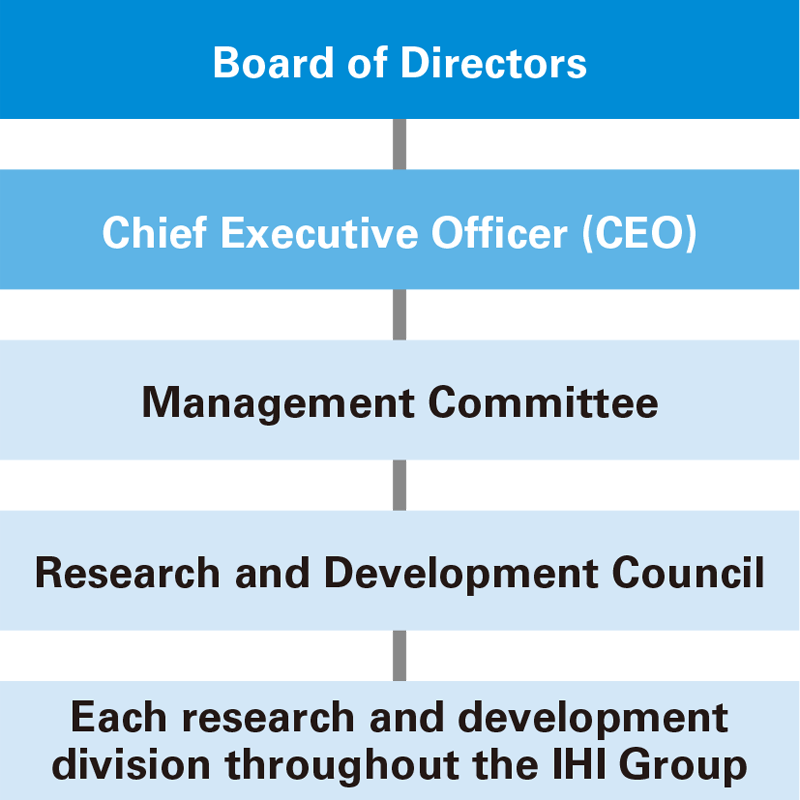Priorities in Technology Development
In order to achieve its vision for the growth, development-focus, and conventional businesses in the Group Management Policies 2023, the IHI Group concentrates research budgets and human resources on the fields of these businesses to conduct technology development.
In fiscal 2024, the Group strengthened the structure of the Corporate Research and Development Division in order to accelerate the transition process from technology development into commercialization. Before the structural change, technology development to explore new technological and business fields had been collectively carried out by the Technology Platform Center, but the development functions toward new product launches were extracted and transferred to the newly-established Integrated Development Center. This organizational division will further promote fundamental technology development and provision of higher added value to products and services in collaboration with business divisions and affiliated companies, allowing technology development to move into commercialization quickly.
Growth Businesses
In the fields of aero engines and space, which are both the Group’s growth businesses, the Group is in the midst of developing technology related to the weight reduction and electrification of aircraft and equipment as well as sustainable aviation fuel (SAF) to make aircraft eco-friendly.
Development-focus Businesses
In the field of clean energy, which is the Group’s development-focus business, ammonia is positioned to be a sustainable fuel that does not emit CO2 when combusted. In order to stimulate its demand and build a value chain for it, the Group is proceeding with the development of a 100% ammonia combustion gas turbine along with ammonia combustion technology for large-scale thermal power generation boilers.
Conventional Businesses
Within fields concerning resources, energy & environment, social infrastructure, and industrial systems & general-purpose machinery, which involve the Group’s conventional businesses, the Group promotes CO2 emissions reduction and labor-saving technology as well as automation on the basis of lifecycle business.
Risks
Currently, international conditions and market environment are changing with astonishing speed, and existing businesses and technologies are likely to become obsolete within a short period of time. Under these circumstances, if the Group is unable to quickly provide services and products that solve social issues, there is potential risk of losing its competitiveness. This could have a significant effect on corporate value and financial condition. Moreover, if future predictions turn out to be incorrect, new ideas and developed technologies may not function as predicted in the market or cause unexpected issues.
Opportunities
The IHI Group possesses fundamental technologies, including rotating machinery, combustion, and welding, developed over many years as a specialist in both industrial and social infrastructure. In addition, through the development of new technology, products, services, and business models, it is possible for the Group to create new business chances in response to market changes and to maintain providing new value. Furthermore, the introduction of model-based development, a development method that utilizes simulation technology, can shorten development time and enable developed technologies to be put to practical use sooner, thereby leading to the creation of business opportunities. This gives the IHI Group a major opportunity to strengthen its competitiveness and ensure business sustainability, directly contributing to an increase in corporate value.

